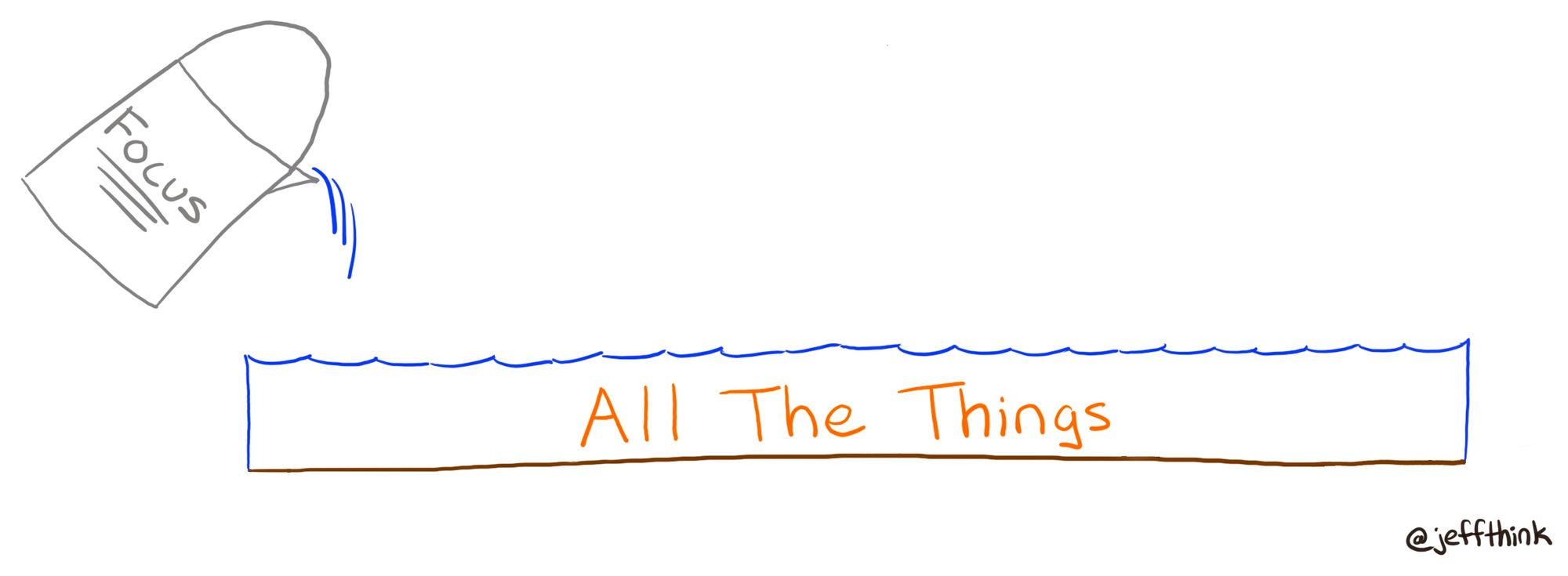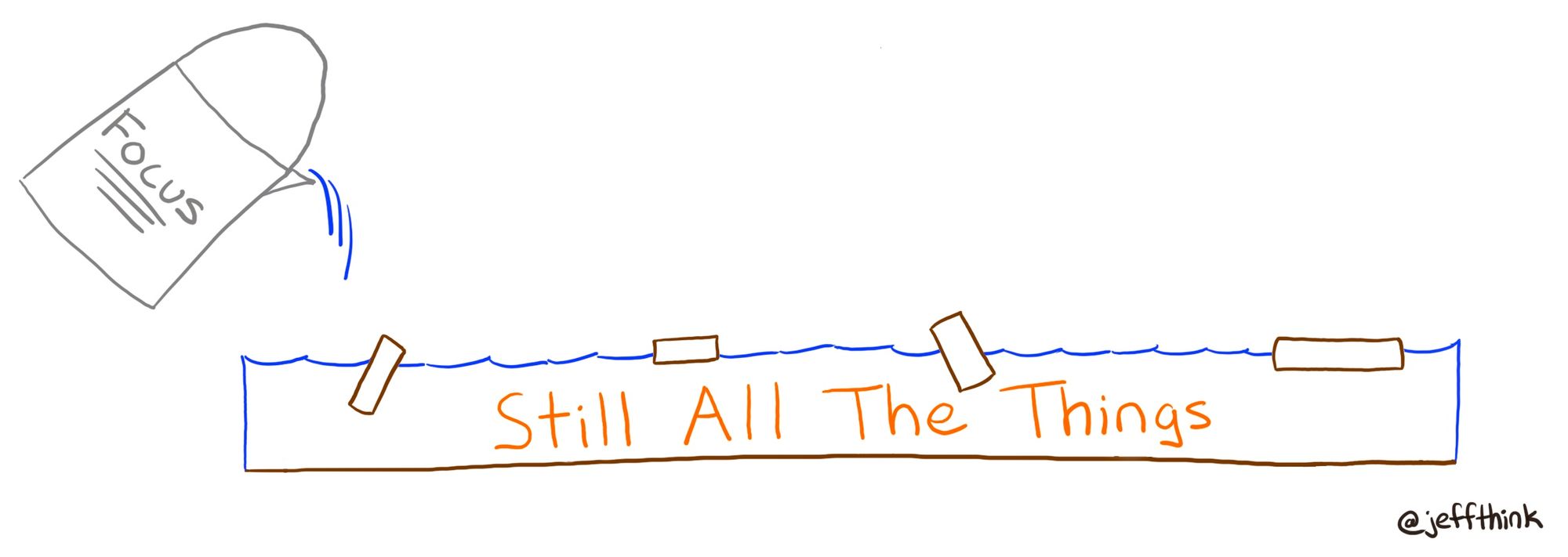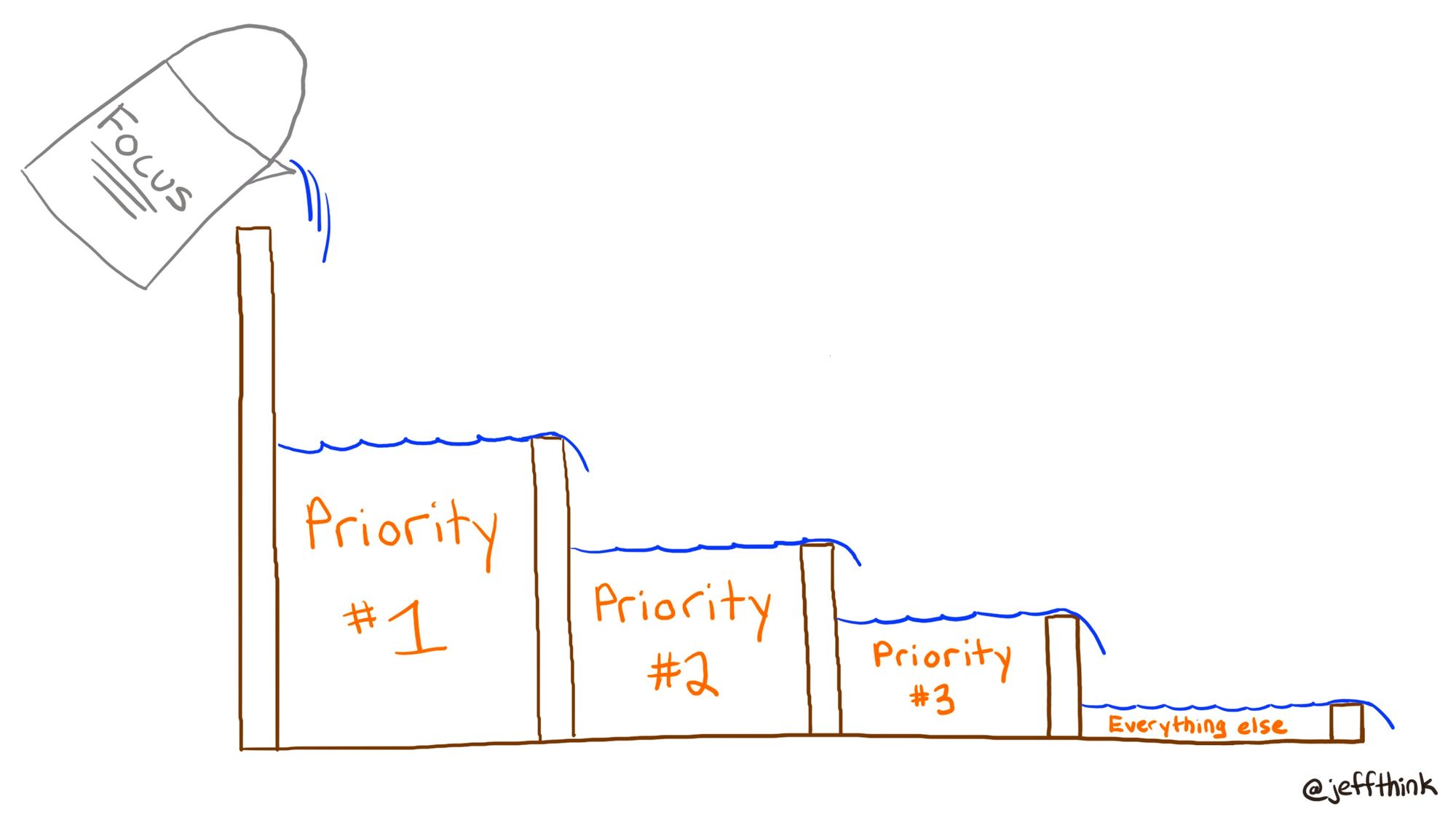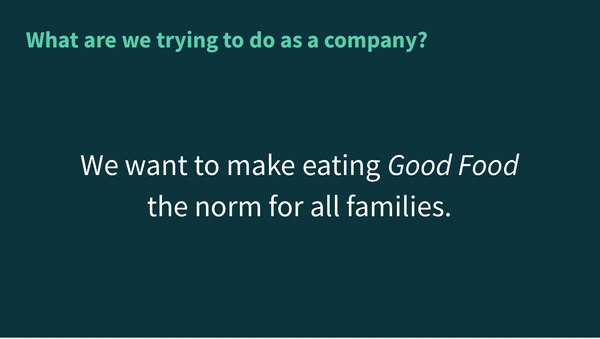An important question in any organization is:
How do you prioritize your work?
There are countless books, blog posts, twitter threads, ancient scrolls, etc. which outline frameworks for doing so. No one needs yet-another-framework from me. Though, a related question that I think is just as interesting is:
How do you explain your prioritization process in an easy to understand way?
In my experience, you can have the fanciest spreadsheet with all the variables but if you can’t communicate how it works or why it’s worth using, you’re likely to struggle to align stakeholders around common priorities.
At some point in my consulting life, I stumbled upon a dam (that’s right — no “n”) metaphor that seemed to resonate with folks. If you think of “focus” (some mix of time, money, mental energy, etc.) as your water source, you can configure a series of dams in order to achieve optimal water usage.
To give some examples:
Many organizations don’t really prioritize at all, and that's like pouring a bucket of water into the ocean. Now all of your fresh water tastes like salt:

Some organizations have fragments of priorities, and that’s like halfheartedly setting up dams that break and end up as floating debris:

Some organizations create a ranked list of priorities, but too many of them, leading to small pools with too little water to utilize:

The organizations that I’ve seen do the best job of prioritizing tend to focus on a small number of ranked priorities. You ensure that your organization’s top priority has the amount of focus it needs before investing in other priorities:

One thing I like about this metaphor is that you can configure the dams differently — the pools could be equal in volume, or you could adjust them over time as the organization’s needs shift. The important thing is that you are being thoughtful about the usage of your organization’s critical resource – your focus.
To build upon that, there is a concept from the book “Build what matters” that makes the case that an organization should always be investing some amount of focus on each of: innovation, iteration, and operations. Organizations that aren't investing in innovation stall, those that leave out iteration tend to be boom-or-bust, and those that don't keep improving on their operations eventually fall apart. In this model, the organization sets the relative investment between categories (e.g. we’re focusing on innovation right now so our focus should be split 60%/20%/20%), and then ranks opportunities within each of those categories. That could look like this:

I’d love to hear if this metaphor resonates (as well as any other good ones you've seen)!



